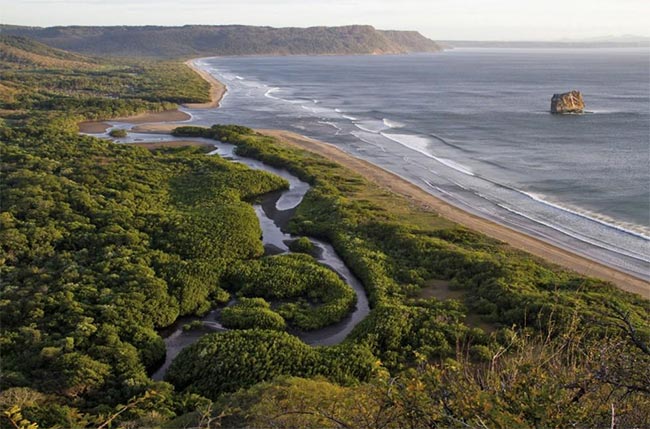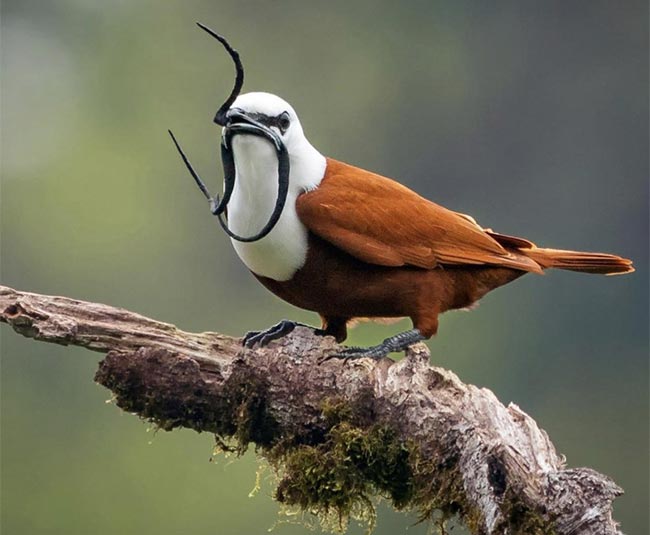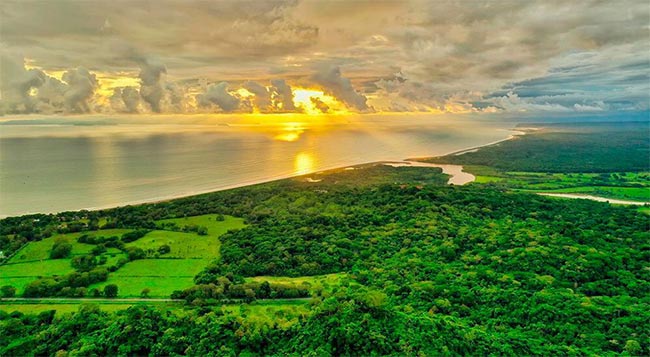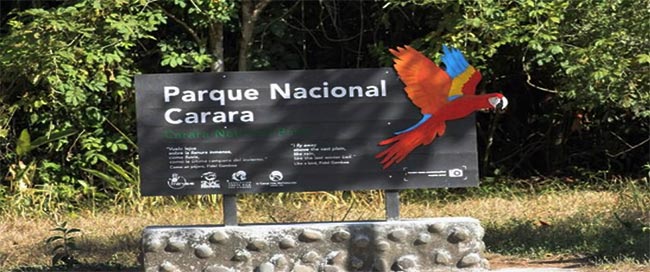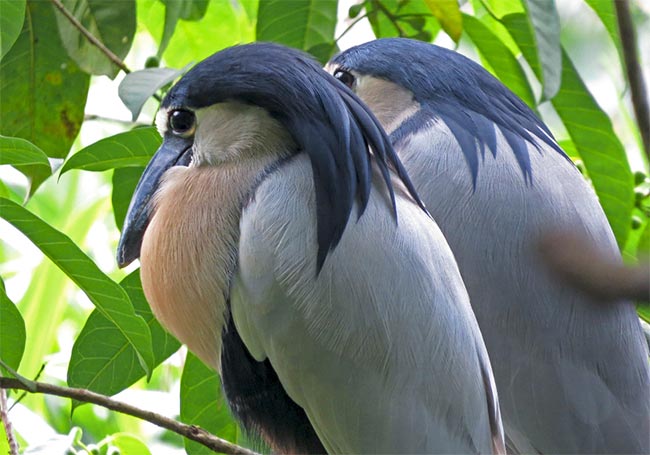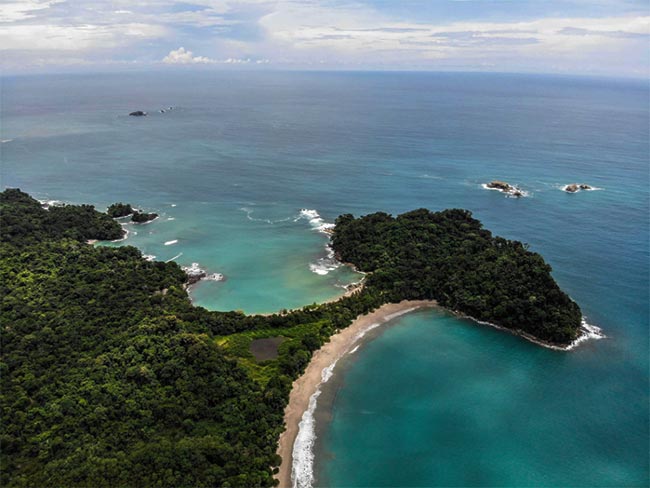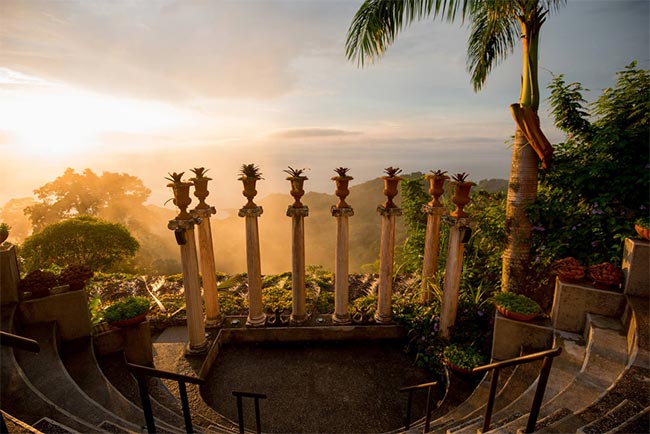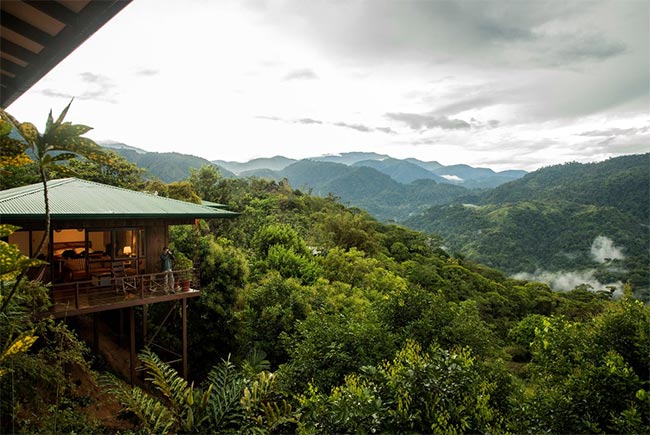The central Pacific coast of Costa Rica is one of the most biologically diverse areas of the Americas.
This location, known as a transition forest, is unique in many ways.
Geographically, the central Pacific lies between the tropical dry forest of the northwest and the tropical rainforest of the southwest.
The central Pacific has the advantage of benefiting from the characteristics of both the dry and the tropical forests. This area has six months of very dry weather and six months of rainy weather.
With the consistency of the weather patterns, birds and wildlife use the forest of the central Pacific as a corridor to have access to food and breeding grounds.
Many of the bird species found in the southern Pacific will migrate as far north as Carara National Park, for example, and many birds normally only found in the northern most parts of Costa Rica, will make their way as far south as the Carara National Park area too.
Additionally, the central Pacific region is just 20 or 30 kilometers from the high mountains of the cloud forest.
Many cloud forest species migrate altitudenaly, moving up and down the mountains throughout the year, so some cloud forest species will also show up in Carara National Park.
This makes the central Pacific an exciting, vibrant destination for bird watching and photography.
Imagine birding in Carara and finding a Lesser Ground Cuckoo from the dry forest, then a Dotted-Winged Ant-Wren from the southern Pacific, then a Three-Wattled Bellbird from the cloud forest, next to a Scrub Greenlet from the lowlands.
A day of birding in Carara can produce well over 100 species of birds and many unexpected species.
Ecosystems of the Central Pacific:
The Transition Forest of the Pacific Coast of Costa Rica covers a great variety of ecosystems, from mangrove forest, estuaries and river mouths, to galery forest, pre-mountain forest, primary rainforest, and secondary rainforest.
The central Pacific extends from the mouth of the Barranca River, near the Port of Caldera, in the North to Manuel Antonio National Park in the South.
Located right in the center of the Transition Zone, and especially important, is Carara National Park, which is the only significant, size wise, forest of its type left in the whole country.
Unfortunately the entire Pacific side of Central America has suffered very intense deforestation since the colonization times. Nowadays only about 1% of the original forest has survived. Costa Rica is committed to reforestation projects though, and thankfully, for many years, the central Pacific is having its forest restored through national and international tree planting programs.
Besides Carara National Park, there are other protected areas including Tivives and Tarcoles mangrove forest, Punta Caletas, Parrita, Damas Mangrove Reserve, Punta Leona private Reserve and Manuel Antonio National Park. These areas help to complete the wildlife corridor that runs from the northernmost regions of Costa Rica to the southernmost regions.
Top Central Pacific Locations for Bird Watching:
Carara National Park:
This beautiful national park was established in 1998.
It has one of the highest diversity of trees in the world, and its native trees are the favorite nesting spot of the beautiful Scarlet Macaw.
Tickets can be purchased at the main ranger station and from there bird watchers and nature enthusiasts can explore three different trails, the Universal Trail (wheelchair accessible), the Sendero Quebrada Bonita, and the Sendero los Araceas.
Visitors will want to be on the lookout for antbirds, hummingbirds, warblers, raptors and much more.
The system of trails takes guests along ponds as well, a great place to see herons, kingfishers, and egrets.
Due to the dense forest at Carara, spotting birds and wildlife can be tricky. We recommend visiting with a birding guide or a naturalist guide.
If you are visiting the park on your own, you can hire a local naturalist guide at the entrance of the park.
Your visit will be enhanced by having a local specialist along to help you spot the amazing creatures that inhabit Carara.
Tarcoles River Estuary:
The unique location of the Tarcoles River and its easy and productive birding makes it one of the top birdwatching & photography sites in all of Costa Rica.
The Tarcoles river forms the northern border of Carara National Park.
Over 300 species of birds have been observed on the river, including native, migratory and coastal birds.
Some of the favorite birds to spot are the American Pygmy-Kingfisher, Double-striped Thick-knee, Rufous-necked Wood-Rail, Bare-throated Tiger-Heron, Boat-billed Heron, Common Black Hawk, and endemic Mangrove Hummingbird.
The intricate Guacalillo mangrove estuary system positioned where the river empties into the Pacific Ocean also contributes to exclusive mangrove species of birds spotted, such as the Panama Flycatcher, Yellow-billed Cotinga, and the Mangrove Vireo among others.
This mangrove is also the nesting site of the brilliant Scarlet Macaw which can often be seen (and heard) flying overhead.
In addition to birds, the Tarcoles River is an important habitat to one of the world’s largest populations of American Crocodiles, as well as habitat to Basilisk lizards, iguanas, monkeys, anteaters, and much more.
Manuel Antonio National Park:
Manuel Antonio National Park is the smallest national park in Costa Rica at just 680 hectares.
With its beautiful combination of rainforest and beaches, it’s not a surprise that Manuel Antonio National Park was listed by Forbes among the world’s 12 most beautiful national parks.
With over 100 mammals and 184 species of birds, Manuel Antonio is a great excursion for anyone looking to experience an abundance of wildlife without hiking for miles and miles.
Along with the incredible nature, Manuel Antonio National Park has 3 pristine beaches for visitors to enjoy.
Damas Island Estuary:
Damas Island Mangroves, located near Quepos, are one of the last remaining major protected mangrove areas in the Central Pacific.
Visitors can explore the mangrove by boat, kayak, or canoe.
The tidal flats are a great place to spot the Black-Bellied Plover, Semipalmated Plover, Whimbrel, Ruddy Turnstone, and different species of Sandpipers.
It’s also a good location to spy the endemic Mangrove Hummingbird.
For general nature lovers, Damas is excellent for monkeys and other small mammals too.
Best Lodges for Birdwatching:
Villa Caletas:
Perched high above the vibrant Central Pacific Coast, Villa Caletas is a beautiful boutique hotel ecologically constructed with stunning views and fabulous service.
Recognized as one of the Small Distinctive Hotels of Costa Rica, this enchanting and sophisticated property is wonderful for couples, groups and families with older children.
The lush tropical gardens draw many bird species to the grounds and several walkways and trails throughout the property are excellent for birding and photography.
Cerro Lodge:
Cerro Lodge was built to provide the best service for nature lovers, especially birders and photographers.
It is surrounded by beautiful landscape, overlooking the sea and the mountains.
The facilities are located in a privileged location, just minutes away from the Tárcoles River, the Carara National Park and, of course, only steps from La Barca trail.
These are three excellent places for the sighting of birds and other animals.
Santa Juana Lodge:
Santa Juana Rural Mountain Adventure Lodge & Nature Reserve offers rustic, well-designed and comfortable accommodations overlooking the panoramic pacific coastline.
There are well-maintained “user-friendly” nature trails, pristine waterfalls to swim in, and traditional Campesino meals prepared and hosted by the village staff of Santa Juana at the Rancho’s Mirador Restaurant.
This lodge is completely off the beaten path, making for exceptional bird watching.
Macaw Lodge:
Macaw Lodge is a working, growing and evolving center for eco-tourism, research and conservation. Today, people from around the world come to Macaw Lodge to discover the natural wonders of Costa Rica.
The spacious, open ground floor of the Lodge is home to the restaurant, lounging area, Internet access, electronics charging center, lending library and bathrooms.
It affords amazing views of surrounding ponds, gardens, forests and wildlife.
Not only does Macaw Lodge offer a quiet retreat, it’s an exceptional location for birding.
Villa Lapas:
This rainforest hotel, located in the Central Pacific of Costa Rica, is a favorite for bird watchers and nature lovers.
The 500 acre private reserve includes primary and secondary forest plus a pristine river flowing alongside the hotel.
Be sure to listen for the Scarlet Macaws, this forest is the perfect place to spot them.
Weather in the Central Pacific:
The driest months in the Central Pacific are December through April.
The rainiest months will be late September through mid November.
Are you thinking about a visit to the Central Pacific on your birding tour to Costa Rica? We’d love to talk to you about it and help you plan the perfect trip. Inquire below to reach us at Costa Rica Focus. Let’s talk about your next (or first) Costa Rica trip.

